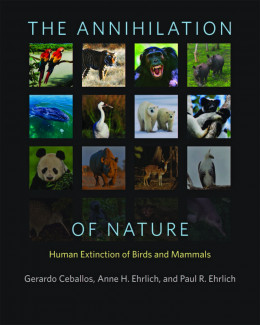
Johns Hopkins UniversityEst. 1876
America’s First Research University
Now Browsing:
Fall books preview: nature & science


 Alfred Wegener: Science, Exploration, and the Theory of Continental Drift
Mott T. Greene
This landmark biography—the only complete account of Alfred Wegener’s fascinating life and work—is the culmination of twenty years of intensive research. Written with great immediacy and descriptive power, Alfred Wegener is a powerful portrait of the scientist who pioneered the theory of continental drift and the modern notion of unified Earth science.
“The definitive biography of Alfred Wegener—and a great read.”—Naomi Oreskes, Harvard University, author of Plate Tectonics: An Insider’s History of the Modern Theory of the Earth and coauthor of The Collapse of Western Civilization: A View from the Future
“Twenty-five years in the making, Greene’s terrific biography of Wegener has absolutely no competition: it is a giant leap forward in our knowledge of Wegener’s views and life. Readers will be immediately drawn into Wegener’s life by the fresh, direct, and accessible writing. This is a must-read for anyone interested in the history of earth science, meteorology, aerology, atmospheric physics, and twentieth-century science.”—Henry R. Frankel, University of Missouri–Kansas City, author of The Continental Drift Controversy
Available in October
Alfred Wegener: Science, Exploration, and the Theory of Continental Drift
Mott T. Greene
This landmark biography—the only complete account of Alfred Wegener’s fascinating life and work—is the culmination of twenty years of intensive research. Written with great immediacy and descriptive power, Alfred Wegener is a powerful portrait of the scientist who pioneered the theory of continental drift and the modern notion of unified Earth science.
“The definitive biography of Alfred Wegener—and a great read.”—Naomi Oreskes, Harvard University, author of Plate Tectonics: An Insider’s History of the Modern Theory of the Earth and coauthor of The Collapse of Western Civilization: A View from the Future
“Twenty-five years in the making, Greene’s terrific biography of Wegener has absolutely no competition: it is a giant leap forward in our knowledge of Wegener’s views and life. Readers will be immediately drawn into Wegener’s life by the fresh, direct, and accessible writing. This is a must-read for anyone interested in the history of earth science, meteorology, aerology, atmospheric physics, and twentieth-century science.”—Henry R. Frankel, University of Missouri–Kansas City, author of The Continental Drift Controversy
Available in October
 The Slain Wood: Papermaking and Its Environmental Consequences in the American South
William Boyd
When the paper industry moved into the South in the 1930s, it confronted a region in the midst of an economic and environmental crisis. Entrenched poverty, stunted labor markets, vast stretches of cutover lands, and severe soil erosion prevailed across the southern states. By the middle of the twentieth century, however, pine trees had become the region’s number one cash crop, and the South dominated national and international production of pulp and paper based on the intensive cultivation of timber.
In The Slain Wood, William Boyd chronicles the dramatic growth of the pulp and paper industry in the American South during the twentieth century and the social and environmental changes that accompanied it.
Available in November
The Slain Wood: Papermaking and Its Environmental Consequences in the American South
William Boyd
When the paper industry moved into the South in the 1930s, it confronted a region in the midst of an economic and environmental crisis. Entrenched poverty, stunted labor markets, vast stretches of cutover lands, and severe soil erosion prevailed across the southern states. By the middle of the twentieth century, however, pine trees had become the region’s number one cash crop, and the South dominated national and international production of pulp and paper based on the intensive cultivation of timber.
In The Slain Wood, William Boyd chronicles the dramatic growth of the pulp and paper industry in the American South during the twentieth century and the social and environmental changes that accompanied it.
Available in November
 The Leatherback Turtle: Biology and Conservation
edited by James R. Spotila and Pilar Santidrián Tomillo
Leatherbacks have been declining in recent decades, and some predict they will be gone by the end of this century. Why? Because of two primary factors: human redevelopment of nesting beaches and commercial fishing.
In the most comprehensive book ever written on leatherback sea turtles, James R. Spotila and Pilar Santidrián Tomillo bring together the world’s leading experts to produce a volume that reveals the biology of the leatherback while putting a spotlight on the conservation problems and solutions related to the species. The book leaves us with options: embark on the conservation strategy laid out within its pages and save one of nature’s most splendid creations, or watch yet another magnificent species disappear.
Available in September
The Leatherback Turtle: Biology and Conservation
edited by James R. Spotila and Pilar Santidrián Tomillo
Leatherbacks have been declining in recent decades, and some predict they will be gone by the end of this century. Why? Because of two primary factors: human redevelopment of nesting beaches and commercial fishing.
In the most comprehensive book ever written on leatherback sea turtles, James R. Spotila and Pilar Santidrián Tomillo bring together the world’s leading experts to produce a volume that reveals the biology of the leatherback while putting a spotlight on the conservation problems and solutions related to the species. The book leaves us with options: embark on the conservation strategy laid out within its pages and save one of nature’s most splendid creations, or watch yet another magnificent species disappear.
Available in September
 Slap Shot Science: A Curious Fan's Guide to Hockey
Alain Haché
Slap Shot Science is an under-the-hood, behind-the-scenes, action-packed romp through special moments in the game as seen from the perspective of science and explained in a way everyone can understand.
Praise for the first edition:
“Haché brings to this informative study the perspective of a physicist and amateur hockey player . . . making the reader feel like going to a game.”—Scientific American
“Pure entertainment, cover to cover.”—The Hockey News
Available in November
Slap Shot Science: A Curious Fan's Guide to Hockey
Alain Haché
Slap Shot Science is an under-the-hood, behind-the-scenes, action-packed romp through special moments in the game as seen from the perspective of science and explained in a way everyone can understand.
Praise for the first edition:
“Haché brings to this informative study the perspective of a physicist and amateur hockey player . . . making the reader feel like going to a game.”—Scientific American
“Pure entertainment, cover to cover.”—The Hockey News
Available in November
Login to View & Leave Comments
Login to View & Leave Comments


